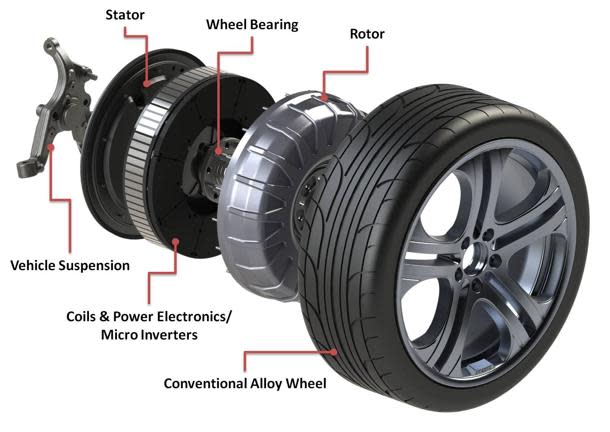 Motoramic
MotoramicProtean Electric rolls towards making in-wheel electric motors a reality
In 2012, Protean Electric—a Michigan-based company with $84 million in Chinese funding—announced it was reinventing the wheel, so to speak. The idea was to create in-wheel electric motors that would eliminate many traditional components—like axles—while freeing up the interior space normally occupied by the powertrain, allowing engineers more freedom in vehicular design.
It was a clever idea; one that required a willing OEM to help facilitate the concept. While Protean has created many development mules over the years as its technology evolves—like Brabus' hybrid-powered Mercedes and a Ford F-150 EV—an official partnership to bring its system to life has finally been announced:
Protean has inked a deal with FAW-Volkswagen, announcing plans to integrate its innovative in-wheel system into the brand's upcoming electric sedan.
FAW-VW, a Chinese automaker that's part-owned by Volkswagen Group, utilizes a previous-generation Jetta sedan as a base for its Bora sedan that serves its Chinese marketplace. The automaker sought an all-electric version of this car, and with its new partnership with Protean, it plans to incorporate an in-wheel motor into each one of the rear wheels, turning the front-wheel drive sedan into a rear-wheel drive electric vehicle.
Protean's system puts the stator—the stationary part of the electric motor—on the inside while the moving rotor sits on the outside and is bolted directly to the wheel hub. All the necessary electronics are housed within the wheel, so unlike all other electric cars, no separate unit located elsewhere within the car is required. The system could be added to all four wheels to make a vehicle all-wheel drive, with each motor costing $1,500. Protean claims its system is "the closest the industry may ever get to a 'bolt-on' electric drive system." Of course dealing with the unsprung mass will be a sizable challenge without a heavily revised suspension setup.
Other in-wheel systems exist, and the concept was born in 1900 with Ferdinand Porsche's Löhner-Porsche hybrid, but none have caught on because of various compromises to the car's suspension setup and the units' inherent size. Because of its "inside out" layout, Protean's motors are smaller, fit within the wheels, can easily be integrated into existing designs and house all the necessary electronics.
Each motor pushes 100-hp and features a monstrous 739 lb.-ft. of torque—a figure Protean claim to be the "highest torque density of any of today’s leading electric drive systems." With a weight of 75 lbs. per motor and a regenerative braking system that recovers 85-percent of kinetic energy, the whole unit fits within a conventional 18-inch wheel.
Initially, the Protean-powered Bora will be a demonstration vehicle set to hit public roads in 2014, with a full production Bora EV arriving in China a few years later. Protean Electric are in talks with other OEMs—including in the U.S.—about utilizing its technology, bringing the product to a worldwide audience. The success of the Bora EV will likely play a large role in convincing other automakers to add a touch of Protean to its fuel efficient diet.

 Yahoo Autos
Yahoo Autos 

